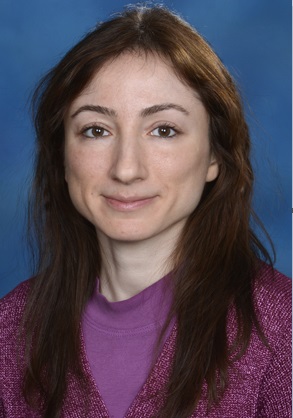Program Information
Inverse Optimization Meets High Performance Computing

D O'Connor
D Nguyen
A Modiri
H Paganetti
D O'Connor1*, D Nguyen2*, A Modiri3*, H Paganetti4*, (1) Los Angeles, CA, (2) University of California Los Angeles, Los Angeles, CA, (3) University of Maryland School of Medicine, Rosedale, MD, (4) Massachusetts General Hospital, Boston, MA
Presentations
7:30 AM : Optimization of non-coplanar beam arrangements: expanding our delivery space - D O'Connor, Presenting Author8:00 AM : Making better IMRT plans using a new direct aperture optimization approach - D Nguyen, Presenting Author
8:30 AM : Photon optimization with GPU and multi-core CPU; what are the issues? - A Modiri, Presenting Author
9:00 AM : High performance computing enabled proton optimization - H Paganetti, Presenting Author
TU-AB-FS2-0 (Tuesday, August 1, 2017) 7:30 AM - 9:30 AM Room: Four Seasons 2
With the progress of radiotherapy technology, and significant strides in our understanding of radiobiology, there is an increasing need to solve larger, more complex computational problems in a clinically-feasible timeframe. Conventional algorithms and computational platforms have been shown ineffective to handle these challenges. For example, the benefit of intensity modulated non-coplanar radiation therapy has shown remarkable dosimetric benefit but the amount of dose calculation as well as the optimization complexity are orders of magnitude greater than those for coplanar geometry. Instead of using the existing heuristic or greedy methods, a group sparsity approach is shown more efficient to solve the large scale optimization problem. Moreover, the process of converting optimized fluence to deliverable machine parameters adds another layer of complexity. A deterministic direct aperture optimization method is developed to overcome the challenge using a single optimization framework. These problems can be formulated as convex, multi-convex and, in some cases, non-convex forms that each has its robust solution. In 4D optimization, the moving and deforming anatomies significantly increase the computational cost, yet, 4D adaptive radiation therapy needs to be performed in real time or near real time. To gain increased control over the dose distribution, the radiation dose may be prescribed to individual voxels instead of individual organs, making the optimization problem considerably more complex. In proton therapy, Monte Carlo dose calculation has a bigger impact compared to photon therapy due to range uncertainties. In addition, proton therapy shows variations in biological effectiveness that cannot be assessed by dose and require linear energy transfer calculations. For (biological) optimization in intensity-modulated proton therapy the number of pre-selected pencils becomes large and Monte Carlo simulations become impractical even on standard CPU clusters. To solve these problems, highly parallelizable global optimization methods and new, parallelized hardware platforms such as multi-core central processing units (CPU) and graphic processing units (GPU) need to be utilized. The symposium will provide an overview of these new research directions and introduce next-generation research tools suitable for large scale computational challenges in radiotherapy.
Learning Objectives:
1. Understand the beam orientation optimization problem and current solutions to the problem.
2. Learn about the deterministic DAO approach using the multiphase piecewise-constant segmentation.
3. Understand which problems in radiotherapy benefit from GPU vs multi-core CPU parallelization and the limitations of GPU for such purposes.
4. Learn the impact of high performance computing on biological optimization and Monte Carlo dose calculation in proton planning.
Funding Support, Disclosures, and Conflict of Interest: Dan Nguyen and Daniel O'Connor are supported by NIH R44CA183390, R01CA188300, R43CA183390, U19AI067769 and DOE DE-SC0017057. Arezoo Modiri is supported by NIH R01CA169102 and Varian Medical Systems, Harold Paganetti is supported by NIH U19CA021239
Handouts
- 127-35487-418554-132109-299008915.pdf (D O'Connor)
- 127-35488-418554-127653-1658800543.pdf (D Nguyen)
- 127-35489-418554-127654.pdf (A Modiri)
- 127-35490-418554-126776-793476063.pdf (H Paganetti)
Contact Email:



